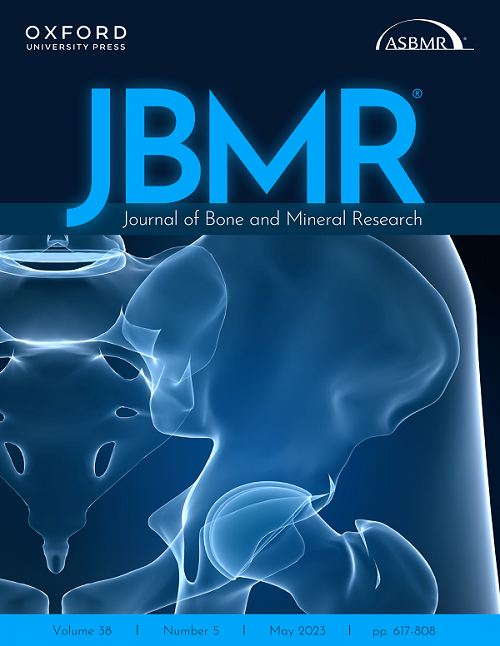摘要
通过双能 X 射线吸收测量法(DXA)测量的骨密度(BMD)被广泛应用于临床实践,以评估骨折风险并指导治疗。DXA 还可以评估髋关节几何形状,包括股骨颈宽度(FNW)和髋关节轴长度(HAL),这两者都与髋部骨折风险增加有关,而与 BMD 无关。我们的目的是评估股骨颈宽度是否能独立于包括 HAL 在内的其他因素预测髋部骨折。我们利用马尼托巴省 BMD 登记处进行了一项回顾性队列研究。研究对象包括 75 095 人(90.8% 为女性),平均年龄为 64.7 岁,具有基线髋关节 BMD 和髋关节几何参数。研究人员使用关联健康记录来确定以髋部骨折为主要诊断的后续住院情况。在平均 8.3 (SD 5.1) 年的随访期间,共记录了 2341 例髋部骨折事件。经年龄和性别调整后,FNW每增加一个标准差就与髋部骨折的发生有关(HR 1.15,95% CI 1.10-1.19),在调整了身高、体重、股骨颈BMD和临床风险因素后,HR值保持不变。然而,FNW 与 HAL 呈显著正相关(r = 0.68)。进一步调整 HAL 后,FNW 不再与髋部骨折风险增加相关(HR 0.98,95% CI 0.94-1.03)。股骨颈骨折、转子间骨折和非髋部骨折的情况也类似。相反,即使对包括 FNW 在内的所有协变量进行调整后,HAL 每增加一个 SD 值,髋部骨折的风险仍会增加(HR 1.35,95% CI 1.28-1.42)。总之,在调整 HAL 之前,FNW 是髋部骨折的一个风险因素,但在调整 HAL 之后则不是。另一方面,HAL 可独立预测髋部骨折,包括股骨颈骨折和转子间骨折。BMD measured with DXA is widely used in clinical practice to assess fracture risk and guide management. DXA can also assess hip geometry, including femoral neck width (FNW) and hip axis length (HAL), which have both been associated with increased risk for hip fracture independently from BMD. Our objective was to assess if FNW predicts hip fracture independently from other factors including HAL. We performed a retrospective cohort study using the Province of Manitoba BMD registry. The study population comprised 75 095 individuals (90.8% women), mean age 64.7 yr, with baseline hip BMD and hip geometry parameters. Linked health records were used to ascertain subsequent hospitalization with hip fracture as a primary diagnosis. During a mean follow-up of 8.3 (SD 5.1) yr, 2341 incident hip fractures were recorded. Each SD increase in age- and sex-adjusted FNW was associated with incident hip fracture (HR 1.15, 95% CI 1.10-1.19), which was unchanged after adjustment for height, weight, FN BMD, and clinical risk factors. However, FNW showed a significant positive correlation with HAL (r = 0.68). When further adjusted for HAL, FNW was no longer associated with increased risk for hip fracture (HR 0.98, 95% CI 0.94-1.03). A similar pattern was seen for FN, and intertrochanteric and non-hip fractures. In contrast, increased risk of hip fracture was consistently seen with each SD increase in HAL even after adjustment for all covariates including FNW (HR 1.35, 95% CI 1.28-1.42). In conclusion, FNW is a risk factor for hip fracture before but not after adjustment for HAL. HAL, on the other hand, robustly and independently predicts hip fracture, including both FN and trochanteric fractures.

 求助内容:
求助内容: 应助结果提醒方式:
应助结果提醒方式:


